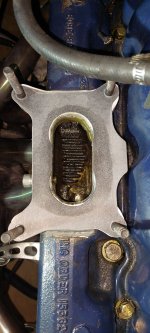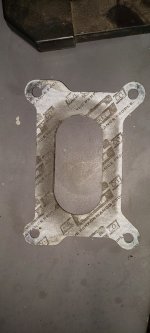Howdy guys!
So i believe i got my leaks sorted out, the car seems to run better and has much more power! Anyhow, I gotta tune this 2300 now and it's throwing me for a loop a bit. Its a 350cfm street avenger. So far it seems to want 64 jets to run a good cruise, but WOT is like an 11 on the wideband. I'm going to the dragstrip on Friday with some friends so I'll pick up some plugs so I can do an actual tune. In case they show up like the wideband shows, how can I lean the WOT but keep cruise the same? Also I'm running a 8.5 power valve. And should I really only look at the outermost cylinders? I ain't mr. Monopoly so I was planning on only checking and replacing 1 spark plug after each pass haha.
Thanks guys,
Ryan
So i believe i got my leaks sorted out, the car seems to run better and has much more power! Anyhow, I gotta tune this 2300 now and it's throwing me for a loop a bit. Its a 350cfm street avenger. So far it seems to want 64 jets to run a good cruise, but WOT is like an 11 on the wideband. I'm going to the dragstrip on Friday with some friends so I'll pick up some plugs so I can do an actual tune. In case they show up like the wideband shows, how can I lean the WOT but keep cruise the same? Also I'm running a 8.5 power valve. And should I really only look at the outermost cylinders? I ain't mr. Monopoly so I was planning on only checking and replacing 1 spark plug after each pass haha.
Thanks guys,
Ryan


